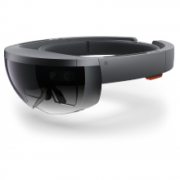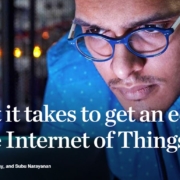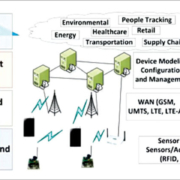Overcoming IoT Adoption barriers
No one disputes the IoT’s potential. A March 2018 report from Capgemini, however, makes clear that formidable barriers continue to inhibit its adoption.
The business and IT consulting firm surveyed senior executives at more than 300 organizations worldwide, analyzing cross-sector IoT use cases to identify which factors have the greatest impact on IoT adoption. The results were eye-opening. About half the firms surveyed struggle to establish a clear business case for their investments, and 60 percent say they lack the analytics capabilities to take advantage of the data generated from IoT sources.

The problems don’t stop there. More than 60 percent of organizations cite cybersecurity or data privacy concerns as a major deterrent to implementing IoT in operations. Just over half of organizations point to uncertain standards as a “significant challenge.”
The takeaway? Many businesses find it difficult to identify use cases, others wind up stuck in the pilot stage, and most cannot transform the promise of the IoT into tangible results. “The IoT is a very different space than traditional IT. As a result, many organizations struggle to find the business value,” states Debbie Krupitzer, digital manufacturing lead for Capgemini North America.
What makes things so hard, Krupitzer says, is the vast array of IoT technologies, components, and platforms, as well as the excessive attention they get. “The focus is too often tilted toward the technology rather than people and processes,” she says. “The IoT isn’t like an ERP implementation where people just adapt to the new system.”
Breaking Down Resistance
According to Krupitzer, conveying the IoT’s value proposition to customers requires integrators to take a different approach than they may be used to. Solution providers, managed service providers (MSPs), VARs, and others “must adopt more of a consultative role. There’s a need to familiarize yourself with the technology and build a center of expertise,” she says.
Building partnerships—including with software consultants, data scientists, and others with expertise you lack—and establishing an ecosystem of tools and solutions are other areas to address. Understanding how to build networks, incorporate clouds, and tap APIs to optimize IoT performance, as well as how to build apps and systems within IoT frameworks, all while focusing on security and privacy, is critical too.
“The IoT is a very different space than traditional IT.”
Debbit Krupitzer
The good news, Krupitzer says, is that organizations that build expertise and develop a formula for implementations dramatically boost their odds for success. This includes developing clear business cases, addressing all cybersecurity and privacy concerns, and putting data to work through more robust analytics platforms.
“Right now, everyone is trying to better understand the convergence of technologies that comprise the IoT,” Krupitzer explains. “Those that work with businesses to address adoption hurdles and identify the value points are at a competitive advantage.”











